Ouvrage Les Sarts is a petit ouvrage of the Maginot Line, built as part of the "New Fronts" program to address shortcomings in the Line's coverage of the border with Belgium. Like the other three ouvrages near Maubeuge, it is built on an old Séré de Rivières system fortification, near the town of Marieux.
Ouvrage Barbonnet is a work of the Maginot Line's Alpine extension, the Alpine Line, also called the Little Maginot Line. The ouvrage consists of one entry block and one infantry block facing Italy. The ouvrage was built somewhat behind the main line of fortifications on the old Fort Suchet, which was already armed with two obsolete Mougin 155mm gun turrets.

The Alpine Wall was an Italian system of fortifications along the 1,851 km (1,150 mi) of Italy's northern frontier. Built in the years leading up to World War II at the direction of Italian dictator Benito Mussolini, the defensive line faced France, Switzerland, Austria, and Yugoslavia. It was defended by the "Guardia alla Frontiera" (GaF), Italian special troops.
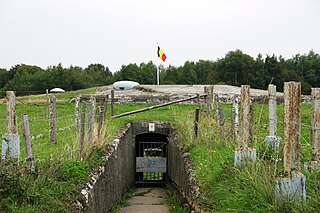
The Fort de Tancrémont is a Belgian fortification located about 3 kilometres (1.9 mi) south of Pepinster. The fort was built in the 1930s as part of the fortified position of Liège, augmenting the twelve original forts built to defend Liège in the 1880s with four more forts closer to the Belgian frontier with Germany. The fort was the last Belgian fort to surrender to German forces in the opening days of World War II, following the dramatic assault on Tancrémont's sister fort, Fort Eben-Emael. Tancrémont has been preserved and may be visited by the public.

The Fort of Aubin-Neufchâteau is a Belgian fortification located near Neufchâteau. The fort was built in the 1930s as part of the fortified position of Liège, augmenting the twelve original forts built to defend Liège in the 1880s with four more forts closer to the Belgian frontier with Germany. The fort surrendered to German forces in the opening days of World War II, following the dramatic assault on Aubin-Neufchâteau's sister fort, Fort Eben-Emael. Aubin-Neufchâteau has been preserved and may be visited by the public.

The Fort of Battice is a Belgian fortification located just to the east of the town of Battice. The fort was built in the 1930s as part of the fortified position of Liège, augmenting the twelve original forts built to defend Liège in the 1880s with four more forts closer to the Belgian frontier with Germany. Battice is nearly as large as the more famous Fort Eben-Emael. Work began in April 1934, with some finish work continuing in 1940 when war broke out. Following the successful German surprise attack on Eben-Emael, Battice held out against the Germans until 22 May 1940. On 28 May 1940 all Belgian forces surrendered. Battice has been preserved and may be visited by the public.
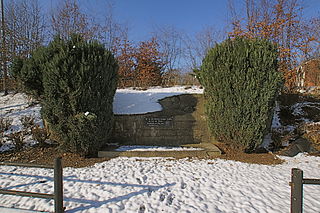




The Fort de Dailly is the largest component of Fortress Saint-Maurice, which is in turn one of the three principal fortified regions of the National Redoubt of Switzerland. Almost entirely subterranean, the Fort de Dailly was built in the Massif de Dailly to the east of Saint-Maurice beginning in 1892. With the Fort de Savatan, it comprises a fortress complex encased in rock high above the strategic Saint-Maurice valley, capable of commanding the valley from Chillon to Martigny. It is the central component of Fortress Saint-Maurice in terms of both its position and its military power. Construction began in 1892 and the fort became operational in 1894. The fort was nearly constantly upgraded with new artillery in increasingly secure positions. Following an incident in which three ammunition magazines exploded in close succession in 1946, the fort was repaired and upgraded with two fully automatic 150mm gun turrets with a range of 24 kilometres (15 mi). After reassessments by the Swiss Armed Forces of their requirements for fixed fortifications, Dailly was progressively closed down starting in 1995, with full closure at the end of 2003.

The Fort de Chillon is a twentieth-century fortification directly adjacent to the medieval Château de Chillon on the edge of Lake Geneva in Switzerland. The fort secures the road and rail lines that pass along the lakeshore running east from Lausanne to the mountainous interior of Switzerland. The position is an advanced work protecting the approaches to Fortress Saint-Maurice, part of the Swiss National Redoubt. Deactivated as a military post in 1995, it is privately owned and is being converted to a wine cellar.

The Fort de Pré-Giroud, also known as the Fort de Vallorbe, is a 20th-century Swiss fortification located in the Jura Mountains near the Swiss border with France. The fort defended the Col de Jougne at Vallorbe, one of the few points in the Jura that could be easily traversable by an invading force. It was a component of the Swiss Border Line of defenses. Built between 1937 and 1939, the fort covers the Swiss end on the Mont d'Or railroad tunnel and the Joux valley. It is armed with three artillery blocks for 75mm guns and two machine gun blocks. All are camouflaged, the artillery blocks as rock formations, and the machine gun blocks as houses. Deactivated as a military post in the 1980s, it is operated as a museum.

Fort Reuenthal is a 20th-century Swiss fortification located in the Aargau canton near the Swiss border with Germany. Built between 1937 and 1939, the fort overlooks the Rhine where it bends around the town of Full-Reuenthal, and was intended to prevent a crossing of the Rhine at the hydroelectric plant at Dogern. It was a component of the Swiss Border Line of defenses. It is armed with two artillery blocks for 75 mm guns and two machine gun blocks. The fort uses camouflage, with house-like superstructures over some positions. Deactivated as a military post in 1988, it is operated as a museum.

Fort Ebersberg, also known as Fort Rüdlingen, was built between 1938 and 1940 in the Swiss Canton of Zurich to guard the Rhine against a German invasion at the opening of World War II. It is the only such position in the Zurich canton, located near the town of Berg am Irchel. The fort was part of the Swiss Border Line defenses, Swiss military designation A5438.
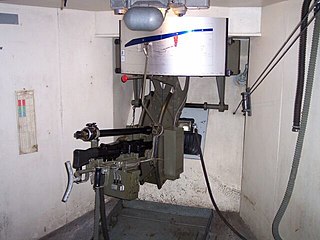
Fort Heldsberg was built 1938–1940 near St. Margrethen in Switzerland, overlooking the Rhine, which forms the Swiss-Austrian border at that location, just south of Lake Constance. The fort was part of the Swiss Border Line defenses, built between 1938 and 1941.

The Border Line defenses of Switzerland were constructed in the late 1930s in response to increasing tensions between Switzerland and its neighbours, chiefly the Axis powers of Germany and Italy. The Border Line was planned to slow or hold an invading force at the border. It consisted of a series of bunkers spaced at short intervals along the French, German and Austrian borders. The bunkers were reinforced by larger multi-blockhouse forts at key points. Most of the positions were within two or three kilometres of the frontier.
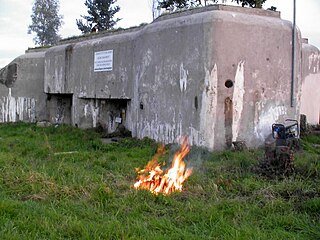
The Fortified Sector of Altkirch was the French military organization that in 1940 controlled the section of the French frontier with Germany and Switzerland in the vicinity of Basel. The sector's principal defense against an advance from Germany was the Rhine itself, which could be crossed only by boat or by seizing a bridge crossing. The frontier with Switzerland was not regarded as a high-risk location, save for a possible advance by German forces through Switzerland. Originally planned as a full extension of the Maginot Line with artillery ouvrages, the sector's fortifications were scaled back and chiefly took the form of casemates and blockhouses. The SF Altkirch adjoined the Fortified Sector of Mulhouse to the north and the Fortified Sector of Montbéliard to the west.
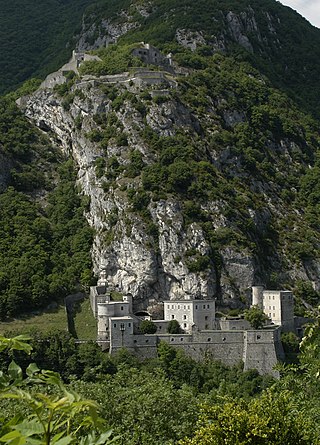
The Defensive Sector of the Rhône was the French military organization that in 1940 controlled the section of the French border with Switzerland and Italy in the area of Geneva. The area was not regarded as a likely point of invasion, owing to the neutrality of Switzerland and the extremely difficult terrain along the Italian portion of the border. It was therefore lightly fortified. Its chief fortified position was the 19th-century Fort l'Écluse, manned by a small force, which held its strategic position against a Panzerkorps for a week in June 1940.
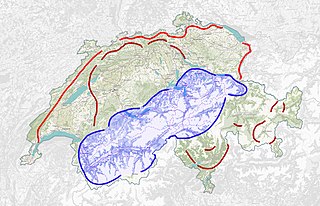
The Swiss National Redoubt is a defensive plan developed by the Swiss government beginning in the 1880s to respond to foreign invasion. In the opening years of the Second World War the plan was expanded and refined to deal with a potential German invasion. The term "National Redoubt" primarily refers to the fortifications begun in the 1880s that secured the mountainous central part of Switzerland, providing a defended refuge for a retreating Swiss Army.


















